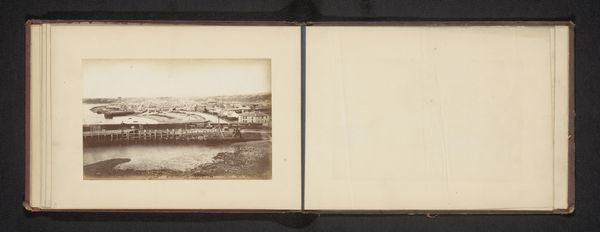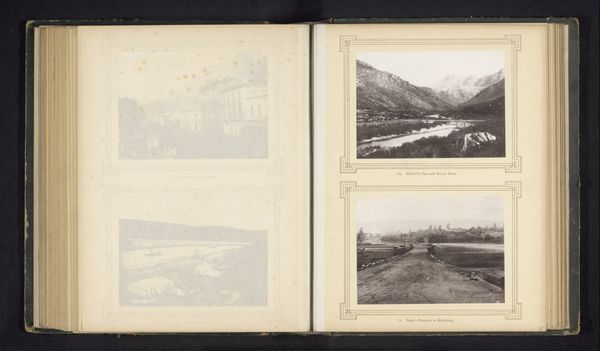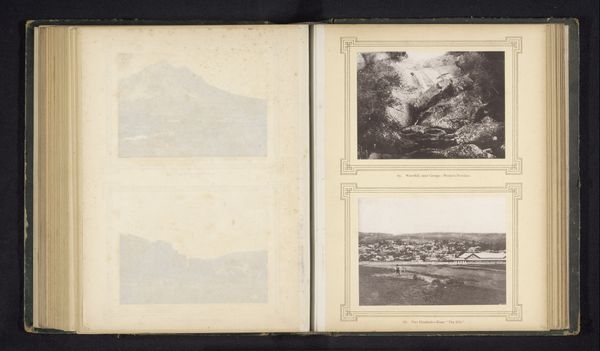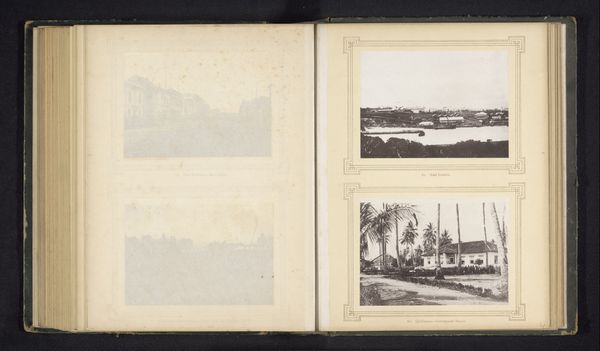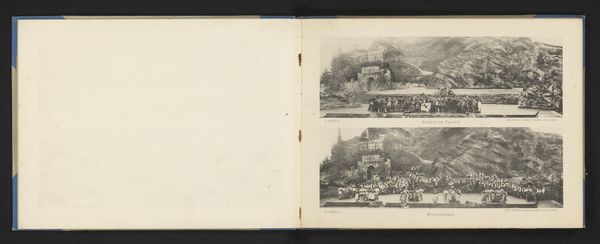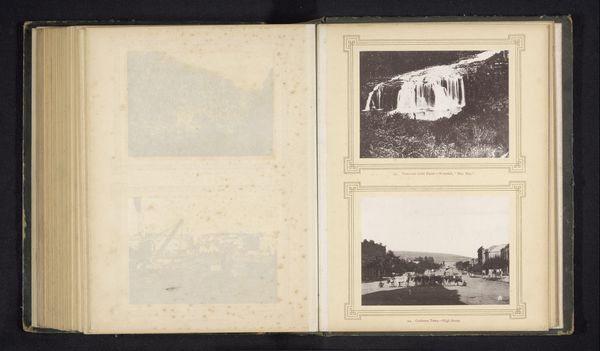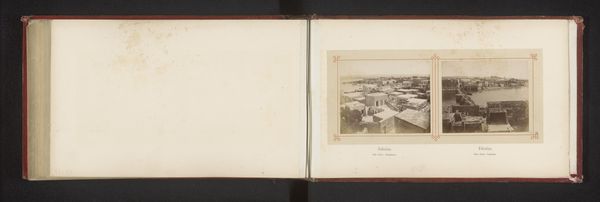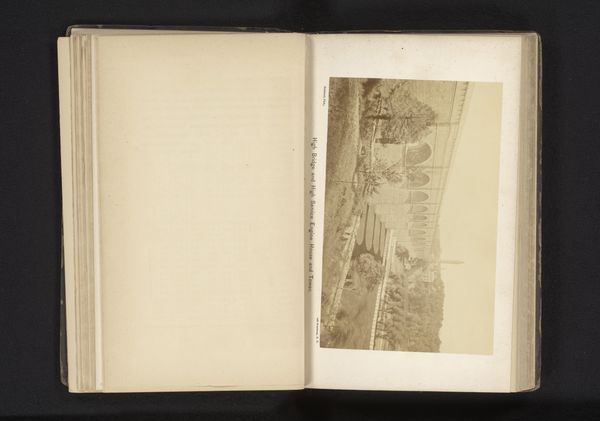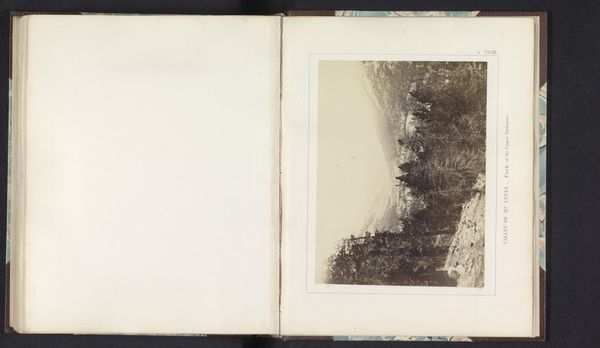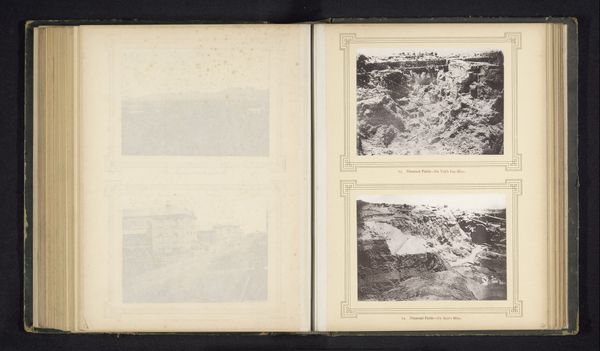![['Mossel Bay', 'Natal-Howick Falls'] by Sam Alexander](/_next/image?url=https%3A%2F%2Fd2w8kbdekdi1gv.cloudfront.net%2FeyJidWNrZXQiOiAiYXJ0ZXJhLWltYWdlcy1idWNrZXQiLCAia2V5IjogImFydHdvcmtzLzFkZDBhMTBmLWRjZjAtNGUyZC1hOTU0LTEzZDI1MTMzNDc3Yi8xZGQwYTEwZi1kY2YwLTRlMmQtYTk1NC0xM2QyNTEzMzQ3N2JfZnVsbC5qcGciLCAiZWRpdHMiOiB7InJlc2l6ZSI6IHsid2lkdGgiOiAxOTIwLCAiaGVpZ2h0IjogMTkyMCwgImZpdCI6ICJpbnNpZGUifX19&w=3840&q=75)
print, photography, albumen-print
# print
#
landscape
#
photography
#
albumen-print
#
building
Dimensions: height 290 mm, width 219 mm
Copyright: Rijks Museum: Open Domain
Editor: Here we have an album page showcasing albumen prints dating from before 1880 by Sam Alexander, featuring landscape views including 'Mossel Bay' and 'Natal-Howick Falls.' I'm struck by how these small photographs try to capture such expansive vistas. What’s your take on this juxtaposition of landscape and material? Curator: I see these prints primarily as evidence of a colonial gaze, produced and consumed within a specific economic and social framework. Albumen prints, mass-produced using exploited labor, allowed for the dissemination of these landscapes, transforming them into commodities. Consider the processes involved. How does the photographer’s labor, the chemist’s preparation of the emulsion, and even the cultivation of the chickens that provide the albumen all contribute to this representation of ‘untouched’ nature? Editor: So, you’re saying the very act of capturing these scenes involved layers of material processes and economic forces? Does this lens change how we view the scenes themselves? Curator: Precisely. The "natural" scene is never simply found but produced through specific means. The framing, composition, and even the choice of what to photograph reveal the intentions of the artist and the demands of the market for such picturesque imagery, obscuring the realities of colonial extraction and exploitation taking place in these regions. How might the circulation of these images reinforced colonial power structures back in Europe, or amongst settler communities? Editor: It’s unsettling to consider that what seems like simple landscape photography is embedded in a complex system of resource extraction and labor. I will consider photography in a different light moving forward. Curator: Exactly! This type of examination provides ways for us to grapple with how materials and method relate to social realities that shaped them.
Comments
No comments
Be the first to comment and join the conversation on the ultimate creative platform.
